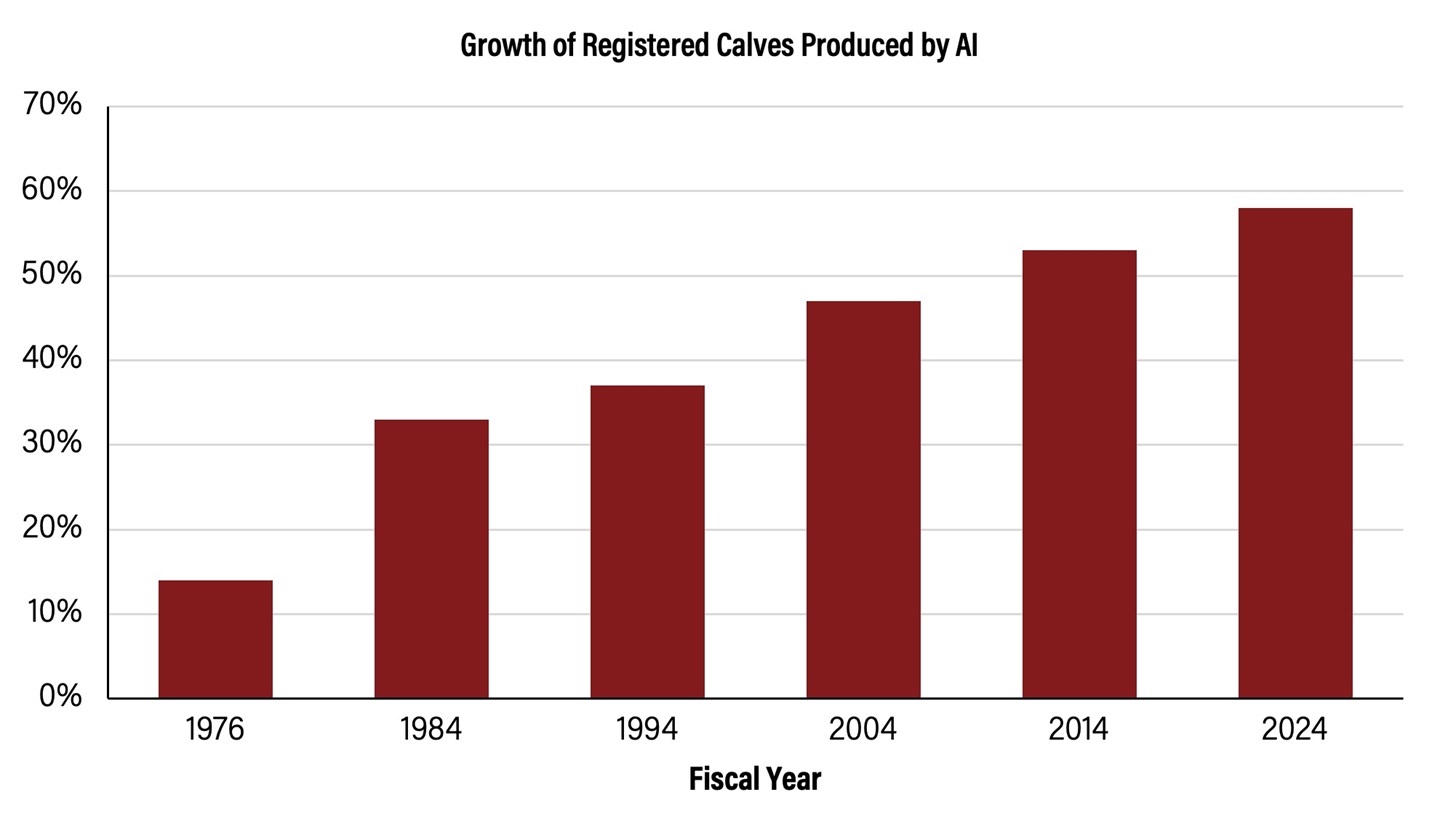DATA DIVE
Growth in Reproductive Technologies
Angus members have embraced reproductive technologies for decades.
May 19, 2025
Many say if George Grant could see the effect of bringing the first Angus bulls to Victoria, Kan., in 1873, he would be in disbelief. In the last 150 years, there have been a lot of changes in the U.S. cow herd; and today, it is estimated nearly 70-80% of the nation’s cow herd is influenced by the Angus breed. The decision to import Angus genetics to the United States has affected beef producers and consumers all around the world.
Approximately 100 years after the first Angus bulls came to America, another unprecedented decision was made that still affects the breed today. In 1972, the Board of Directors voted to implement open artificial insemination (AI).
This meant breeders could have access to new genetics on sires whether or not they owned the sire and could register resulting progeny with the American Angus Association. This allowed for more breeders to have access to new genetics and work to improve the Angus breed.

Fig 1: Percentage of registered calves produced by AI during fiscal year

Fig 2: Percentage of registered calves produced by ET during fiscal year
Artificial insemination
Angus members continue to embrace the use of AI as 53 years later, the decision made in 1972 still has a substantial influence on the breed. Prior to open AI being implemented, calves provided by AI could be registered if the member owned the sire, so AI technology was already being utilized by members, just in a more limited capacity.
Looking back over time, in 1976, four years after open AI was made available, 14% of registered calves were produced by AI (Figure 1). From 1976 to 1984, there was a 19% increase in the number of calves registered that were produced by AI. Since that time, the percentage of calves registered produced by AI continues to grow each decade. Most recently, in FY 2024, approximately 58% of the calves registered were produced by AI.
AI has allowed breeders to gain access to genetics they wouldn’t have otherwise. It allows sires to have a larger impact in the breed than they would if only producing calves naturally. AI also allows producers to use those genetics even after a bull is dead, as long as there is viable semen available. In fiscal year 2024, calves produced both naturally and as a result of AI resulted from genetics spanning across seven decades.
Embryo transfer
Embryo transfer (ET) is another reproductive technology Angus breeders have embraced through the decades. The first ET calf was recorded with the Association in 1977. The following fiscal year, there were 105 ET calves registered. Since that time, there has been steady growth in the use of ET technology.
In 1984, 2% of the calves registered were produced by ET (Figure 2). During a decade, that percentage increased to 4% in 1994. In a 20-year time span, in 2014, ET calves represented 10% of registrations. Most recently in 2024, 16% of the calves registered were produced by ET. Angus members continue to take advantage of reproductive technologies to advance genetics in their herds and ultimately the entire beef industry.
Additional technologies
Advancements in science for reproduction continue to evolve. From cloning to sexed semen and the possibility of gene editing to more refined methods for current technologies, there will continue to be opportunities for Angus members to use these technologies in their herd to advance their genetics.
If only George Grant could see the changes that have taken place in the beef industry over the last 152 years since the first Angus bulls came to America. Angus breeders have a rich history of using tradition to inspire innovation and embrace new technologies to advance the Angus breed.

Esther Tarpoff, Director of Performance Programs
Topics: Association News , EPDs , Genetics , Member Center Featured News , Reproduction
Publication: Angus Journal


